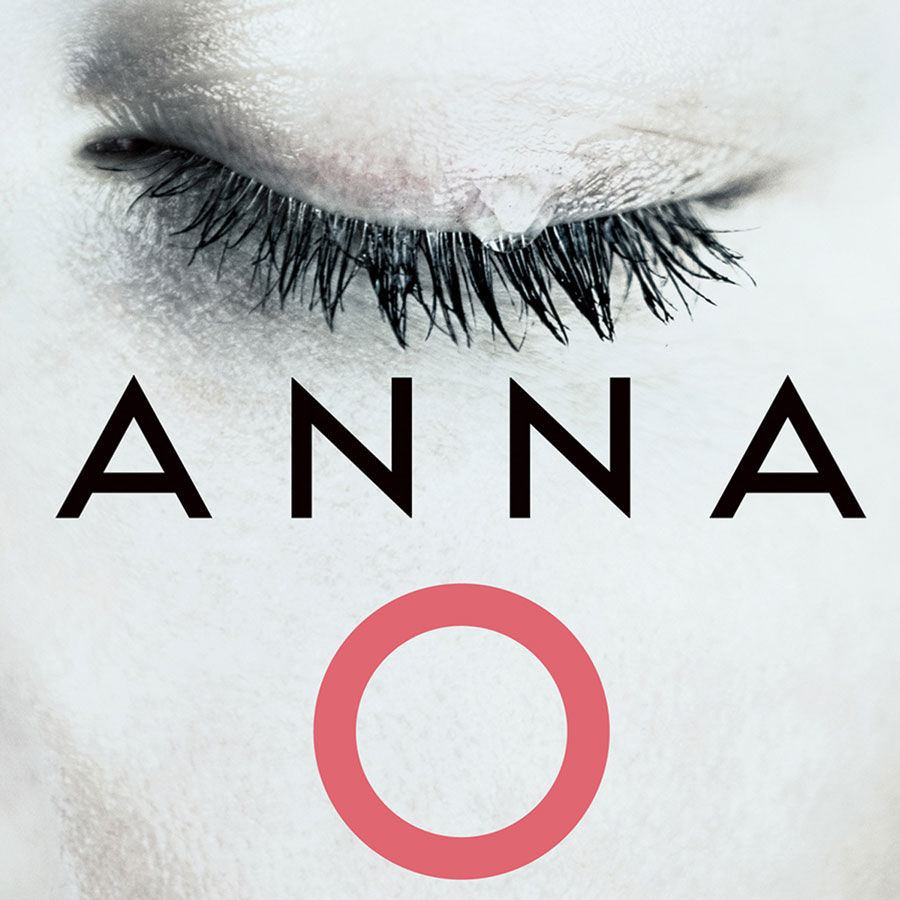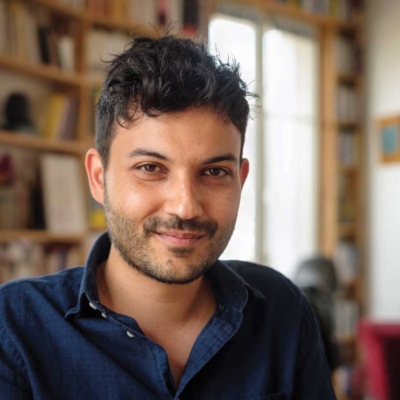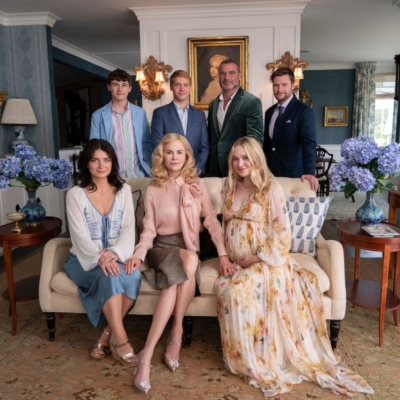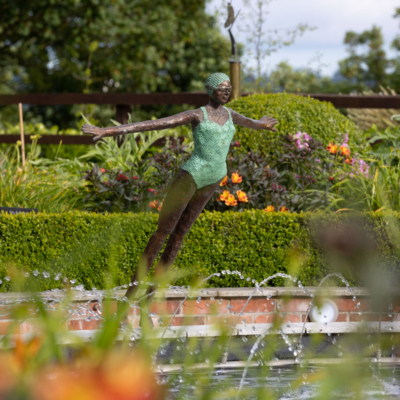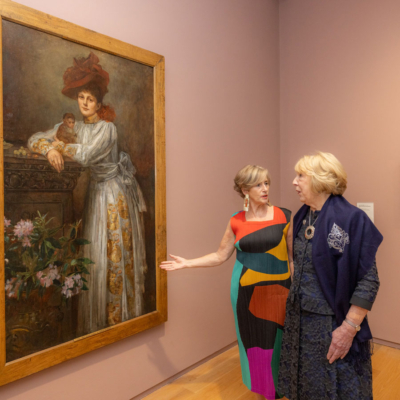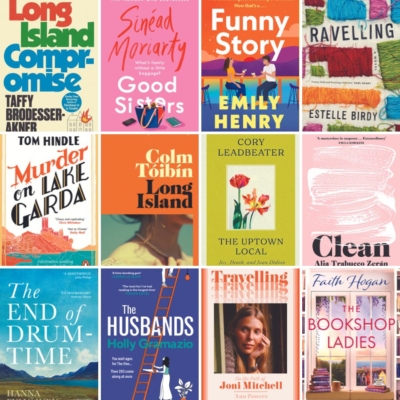In this extract from Matthew Blake’s psychological thriller Anna O, Ben, a sleep psychologist, reflects on Anna Ogilvy’s infamous sleepwalking murders four years previously, and finds out that she is still mysteriously asleep…
Anna O is the propulsive debut novel from Matthew Blake. Already sold in over 30 territories, it is a psychological thriller that asks an original question – can we be held responsible for our actions if we were asleep while committing them?
Anna O tells the story of the case of a young woman who kills her two best friends in her sleep, and the therapist who is tasked with waking her up.
The book is inspired by real-life cases of people who commit crimes while sleepwalking and a mystery illness known as ‘resignation syndrome’, where patients fall into a deep sleep from which they never wake up. The compelling question at the heart of his debut novel is: if you kill someone while you are sleepwalking, are you guilty or not guilty?
The book has seen Matthew Blake described as the new Gillian Flynn or AJ Finn. Before writing fiction, Blake worked as a researcher and speechwriter at the Palace of Westminster. He lives in London.
BEN
The bare facts of the Anna O case are relatively straight-forward. That’s, I think, why everyone remembers the case. There’s something shocking about the raw simplicity of it.
At 3.10 a.m. on the morning of August 30th, 2019, Anna Ogilvy, the twenty-five-year-old daughter of a senior shadow government minister and founding editor of the magazine Elementary, was found asleep in her cabin at a farmhouse retreat in Oxfordshire with a twenty-centimetre kitchen knife. In the neighbouring cabin were the bodies of her best friends: Douglas Bute, twenty-six, and Indira Sharma, twenty-five.
The post-mortems later found ten stab wounds on both bodies. Anna’s fingerprints were the only dabs on the knife and there were bloodstains on her clothing. Forensic analysis subsequently made a positive match between the clothing and both victims. Digital forensics, meanwhile, found a WhatsApp message on Anna’s phone containing a partial confession sent before the deep sleep took hold.
From the level of rigor mortis, the estimated time of death was several hours prior. Both victims were beyond saving, their wounds fatal. DI Clara Fennel from the Thames Valley Serious and Organised Crime Unit was the first officer to reach the Farm and attend the crime scene. She discovered Miss Ogilvy still dressed in the bloodstained items of clothing. Despite numerous attempts to rouse the suspect, Miss Ogilvy remained asleep and unresponsive and was later transferred by ambulance to the John Radcliffe Hospital on Headley Way.
All tests proved normal. She was alive. Her body was functioning. The mystery illness causing her deep sleep was impossible to identify.
But she never opened her eyes again.
The public fallout was brutally swift. Anna’s mother, Baroness Emily Ogilvy, resigned her position as Shadow Home Office Minister with immediate effect and stood down from the House of Lords. Richard Ogilvy, Anna’s father and a global fund manager, abandoned plans to open a new office in Manhattan. The nickname itself came from Anna’s social media handle: @AnnaO. Most murder suspects are low-IQ males with cauliflower ears and grim histories of domestic violence. Anna O was young, female, highly educated and already a public name as a magazine journalist and writer. The story was every tabloid’s dream.
The press soon dug up everything else about Anna too: the childhood in a Hampstead townhouse; the rumours of teenage drug use; the rent-a-quote boyfriends from Oxford; even the other staff and interns at Elementary, the magazine which Anna founded alongside Indira and Douglas. If I’ve learned anything as a psychologist, it’s that all high-profile murders are about timing. August was the perfect month, right in the middle of silly season. A few months later, and it might never have caught fire.
Luckily for me, Anna Ogilvy chose her moment well.
Soon, of course, even the tabloid names became a dividing line. Believers in Anna’s innocence called her ‘Anna O’. Believers in her guilt dubbed her ‘Sleeping Beauty’. No one, however, could take their eyes off the story.
Truthfully, neither could I.
The four floors of the Abbey are not equal. The ground floor is the reception room, an ode to good taste and professional interior design. The basement houses the kitchens and other domestic services. The first floor is for drop-ins, as we call them, the fly-by-night patients who want help with some sleep-related problem but without committing to the full immersion, all tinted Mercedes and private flights from London City.
Floors two and three, meanwhile, are for the truly committed, those whose sleep problems are life-denying. The residents. Each residential patient at the Abbey gets their own private room and en suite. The ambience is similar to a private hospital or a boutique townhouse hotel. There are menus for room service and books, newspapers and magazines on demand. The only exception is anything digital: no mobiles, no laptops and no iPads. There is no Wi-Fi on floors two and three. We are gloriously analogue here, relics from a distant past.
The top floor is staff-only. The sea-blue walls become scabbier. Minimalism is replaced by public-sector scruff. Offices gargle up papers and files. And, tonight, I stand by the window of Bloom’s office and watch Donnelly disappearing inside a sleek government Jaguar down below before being swallowed by the lamplit darkness.
Cold leaks through the old windows. Every room on the top floor is draughty. I think now of that email sitting in my inbox. It was a job offer of sorts from the Pro Vice-Chancellor at the University College of the Cayman Islands. He dangled the prospect of a Visiting Fellowship and a chance to lead their new graduate course on the psychology of sleep. Stupidly I declined, choosing rainy British streets instead of glorious Caribbean beaches. The offer remains a sun-soaked what-if, haunting these damp, squally London nights.
Bloom and I decant to the staff cafeteria at the end of the hall. I wash a brace of coffee cups and excavate some out-of-date cheesecake from the small portable fridge. We eat it off paper plates and cool our cups of Nescafé instant. Bloom, as usual, consumes the lion’s share. I make do with the crumbs.
Then Bloom says, ‘I imagine you have some questions.’
I always have questions. It’s been like that from the very beginning.
Bloom removes another slim manila file, much like Donnelly’s, and slides it across the crumb-filled tabletop.
I take it reluctantly. ‘Another mystery document. Am I meant to guess this one too?’
She smiles. ‘If you like.’
I turn my attention to the file. I note the Ministry of Justice crest again and the high-security classification. RESTRICTED glowers from the cover in blood-red capitals. I open it and see a large photo on the first page with a white, tubular hospital background. It shows a robed patient in some kind of medical bed.
The patient is female, age indeterminate. Her eyes are closed despite her hair being newly combed and washed. The hair appears freshly cut, too, though with the faintest pinprick of white at the root. The face, meanwhile, looks peaceful but no longer young. Despite everything, it still takes me a moment to compute.
Anna Ogilvy. Bloom watches closely. ‘I had the same reaction.’
‘So Donnelly wasn’t kidding. She seems—’
There is some mistake, I’m sure. Back in 2019, Anna Ogilvy was peaking. She had a twenty-something swagger, life still brimful of possibilities. Her photo was featured on countless newspaper supplements and online profiles, with that punkish grin and pixyish hair. The figure in this new photo, by contrast, is a stranger. There’s a deadness to her, overwhelming all the other features. Her hair looks wig-like. There’s an alabaster quality to her entire body, a figurine from Madame Tussauds.
I swallow my surprise. ‘She looks like a ghost.’
‘The woman’s been asleep for four years. She practically is a ghost.’
‘What about brain activity?’
‘Apparently it’s remained the same. EEGs, the lot. All the monitors suggest she’s simply in a deep sleep. It’s just the sleep in question has lasted for nearly one thousand five hundred days.’
‘There’s been no change at all?’
‘Flick to page five,’ says Bloom.
I reach the page. It consists of a series of graphs. They show Anna’s brain function and physiological response. People stagger into sleep; most usually snap out of it. The EEG results are normal, as they always have been. But the physical response levels tilt up just a fraction near the end.
‘When was this?’
‘Four weeks ago, apparently. The only event of its kind. The monitors showed her becoming more stimulated by external events.’
‘It could be a fluke, of course.’
Bloom sniffs, unconvinced, then says, ‘Try the next page.’
I turn. I still feel used but can’t help myself. The mystery of it hooks me in. The next page shows the anomalous results in greater detail. I check the days, then the weeks. For some reason, Anna almost woke up four weeks ago. The graphs can be read in no other way. Something happened.
‘Was there any explanation?’
‘No,’ says Bloom. ‘Or at least none that the medical team could find.’
‘A mystery then.’

Anna O by Matthew Blake, published by HarperFiction, is out now; www.easons.com.




